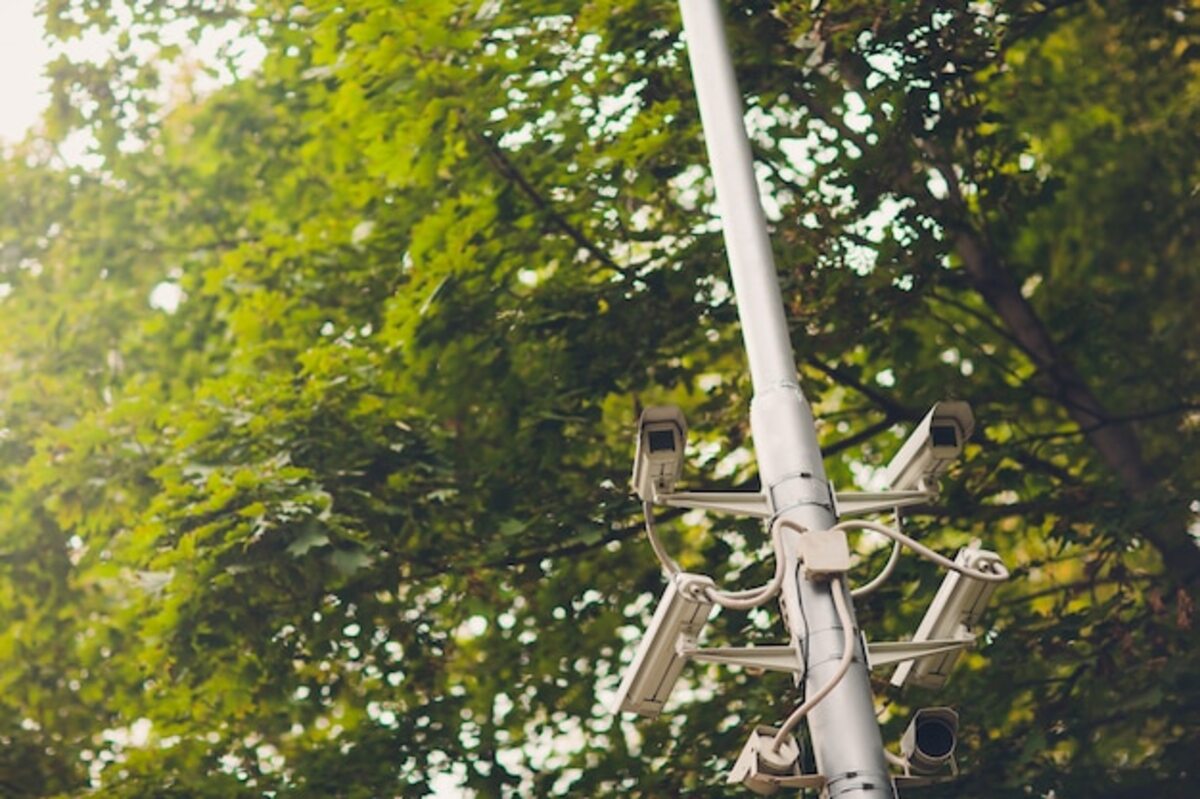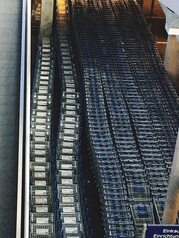Connectivity and its Relationship with the Valuation of Urban Spaces

Connectivity is a key factor that transforms the perception and value of urban spaces. In a world where mobility and access to services are essential, the quality of urban connections can determine not only the comfort of its inhabitants but also the added value of properties in an area. This article will examine how well-planned and accessible infrastructure can drive urban development and increase the attractiveness of different areas, making them desirable places to live and invest.
The Importance of Connectivity in Urban Development
Connectivity in urban development goes beyond simple transportation infrastructure; it involves creating networks that facilitate the smooth movement of people and goods. This includes not only roads and highways but also efficient public transportation systems, safe pedestrian paths, and spaces designated for bicycles. When areas are well connected, greater social and economic interaction is encouraged, which can result in increased local commerce and improved available services. The positive perception generated by these connections can transform previously underserved neighborhoods into vibrant and active places.
Additionally, connectivity has a direct impact on the valuation of urban spaces. Properties located near public transport routes or access to essential services tend to maintain or increase their value over time. Residents are increasingly seeking areas where they can move around easily, which leads real estate developers to pay special attention to these factors when planning new projects. Urban planning that prioritizes connectivity contributes not only to the well-being of its residents but also to the overall economic boost of the area, thus making cities more attractive environments for both living and investing.
2. Road Infrastructure: The Heart of Urban Connectivity
The road infrastructure is essential for urban connectivity, acting as the circulatory system of a city. Roads, bridges, and streets not only facilitate the transit of people and vehicles, but they are also crucial for accessibility to essential services such as education, health, and commerce. A well-designed road network connects different areas, allowing residents to move easily and quickly. This fluidity in movement not only enhances the quality of life for inhabitants but also elevates the attractiveness of the urban environment, turning previously neglected areas into hotspots where people want to live and invest.
Additionally, adequate road infrastructure can foster local economic development by attracting businesses and encouraging investments. Areas with good road connections often see an increase in commercial activity, which generates jobs and revitalizes entire neighborhoods. The creation of bike lanes and pedestrian spaces also contributes to this phenomenon, promoting sustainable transportation alternatives and enhancing the user experience. In this context, cities that prioritize comprehensive road infrastructure not only improve their internal functionality but also position themselves favorably in the real estate market by increasing the value of their urban spaces.
3. Efficient Public Transport: A Boost for Valorization
Efficient public transportation is a fundamental pillar in the valuation of urban spaces, as it provides an accessible and sustainable alternative for the daily commutes of citizens. When cities have well-structured transportation systems, such as buses, trains, or trams, access to various areas is facilitated, which not only improves the quality of life for residents but also attracts new investments. An effective transportation system reduces dependence on private cars, thereby contributing to decreased traffic congestion and pollutant emissions, resulting in cleaner and more pleasant environments to live in.
Moreover, the presence of reliable public transportation can radically transform the perception of an area. Areas that are well connected through efficient routes often experience an increase in their real estate demand. Potential buyers and tenants value the ability to commute quickly to their workplaces, schools, or shopping centers without complications. This creates a domino effect on urban development: businesses and services tend to establish themselves near public transport stops, thereby increasing the area's appeal and raising its value. In this sense, investing in public infrastructure not only benefits current users but also lays the groundwork for sustained and sustainable economic growth in the future.
4. Green Spaces and Their Role in Social Connectivity
Green spaces play a crucial role in social connectivity within urban environments. By providing areas for recreation and rest, these spaces encourage interaction among residents, creating a sense of community that transcends social and cultural barriers. Parks, gardens, and squares not only beautify the urban landscape but also serve as meeting points where people can socialize, engage in outdoor activities, and participate in community events. This social connection is essential for strengthening bonds among residents and promoting a more cohesive and collaborative environment.
Additionally, the presence of green spaces can significantly increase the value of nearby properties. The perception of quality of life rises when citizens have access to natural areas that allow them to enjoy the outdoors and disconnect from urban hustle. Research has shown that neighborhoods with abundant green spaces tend to attract young families and professionals, driving real estate demand in these areas. Consequently, investing in the creation and maintenance of green spaces not only enhances the well-being of residents but also contributes to long-term economic development and urban sustainability.
5. Technology and Connectivity: Transforming Urban Spaces
Technology and connectivity have revolutionized the way we inhabit and perceive our urban environments. The implementation of high-speed networks, intelligent transportation systems, and mobile applications has allowed citizens to interact with their surroundings more efficiently. This not only enhances the quality of life by facilitating access to essential services but also creates opportunities for local economic development. Areas with advanced technological infrastructure tend to attract both residents and businesses, resulting in an increase in real estate value in those regions.
Additionally, connectivity extends beyond the mere availability of Internet or public transport; it involves creating interconnected communities where residents can collaborate, share resources, and innovate together. For example, digital platforms can enable initiatives such as co-working and co-living, fostering a sense of community and belonging. Urban spaces that promote these social and technological connections tend to be more attractive to potential buyers and tenants, which further reinforces the valuation of these areas. In this sense, investing in technology and connectivity is not only a strategy to enhance urban functionality but also an effective way to increase the overall value of urban space.
6. Impact of Urban Design on Real Estate Appreciation
Urban design plays a crucial role in the valuation of real estate spaces. Areas with well-planned design, which integrate green spaces, accessible public areas, and a logical arrangement of streets and transportation routes, tend to be more attractive to potential buyers and tenants. This type of planning not only improves the quality of life for its residents by facilitating access to services and recreational activities, but also creates a more cohesive and dynamic community. As a result, properties in these areas often experience an increase in their value, as they are perceived as more desirable.
Furthermore, the impact of urban design extends beyond aesthetics; it directly affects key economic factors. Investments in infrastructure such as bike lanes, efficient public transport stops, or adequate pedestrian areas can attract both local businesses and large developers. This creates a positive cycle where the improvement of the urban environment not only increases the value of residential properties but also encourages commercial growth and job creation in the area. Thus, proper urban planning can be seen as a driver for sustainable and lasting economic development.
7. Successful Cases: Cities That Have Improved Their Connectivity and Valuation
One of the most prominent cases in improving connectivity and its impact on the valuation of urban spaces is that of Medellín, Colombia. The implementation of the metropolitan transportation system, including the innovative MetroCable, has transformed previously marginalized areas into vibrant and accessible zones. This comprehensive approach not only facilitated the movement of citizens but also fostered local economic development by attracting investments and new businesses. As a result, properties in these areas have seen a significant increase in their value, demonstrating that well-designed infrastructure can be a driver of social and economic change.
Another notable example is the case of Copenhagen, Denmark, which has invested in an extensive network of bike lanes and efficient public transport. This strategy has significantly elevated urban quality of life and positioned the city as one of the most desirable places to live. The integration of sustainable transport with green spaces and pedestrian zones has not only reduced the environmental footprint but also increased real estate value in areas close to these infrastructures. In this way, Copenhagen serves as a model for other cities seeking to improve their connectivity while enhancing the value of their urban spaces.



